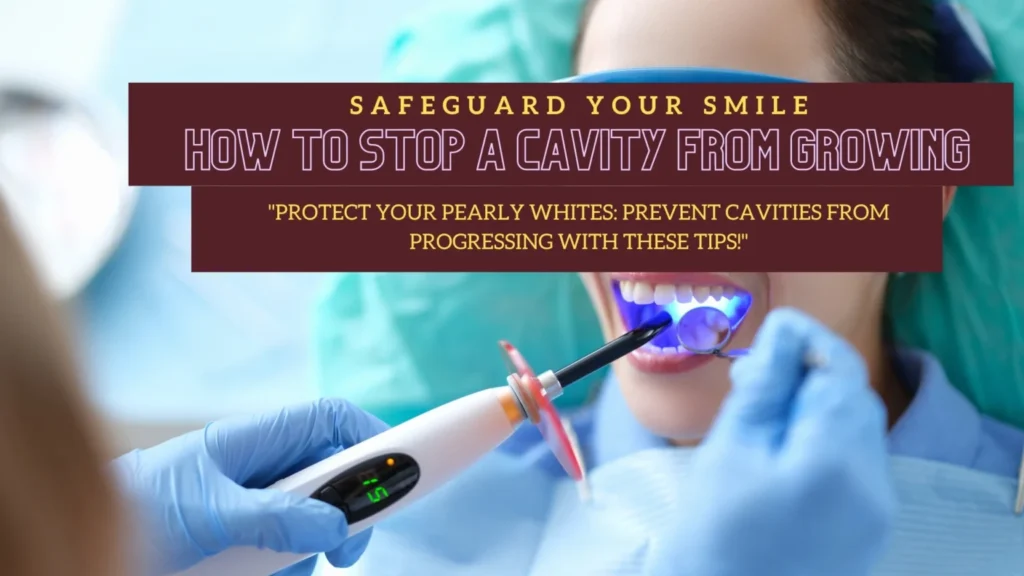Cavities, also known as dental caries or tooth decay, are a prevalent dental issue affecting individuals of all ages around the world. They happen when bacteria in the mouth produce acids that attack the enamel, causing demineralization and eventual breakdown of the tooth structure. While cavities can be a typical concern, the inquiry frequently arises: Can you stop a cavity from growing? Understanding the factors adding to cavity formation and the strategies for counteraction and management is crucial in addressing this question successfully.
Understanding Cavity Formation:
To understand how to forestall cavity development, getting a handle on the course of cavity formation is essential:
Bacterial Action: Bacteria naturally present in the mouth feed on sugars and starches from food particles left on the teeth after eating.
Acid Creation: These bacteria produce acids as results of their metabolic cycles. These acids attack the enamel, the defensive external layer of the teeth, leading to demineralization.
Cavity Formation: Over the long haul, repeated acid attacks weaken the enamel, leading to the formation of cavities or openings in the teeth. Whenever left untreated, cavities can advance further into the tooth, affecting the basic layers and potentially leading to pain, contamination, and tooth misfortune.
Strategies for Avoidance:
While cavities can be challenging to turn around once they create, several preventive measures can assist with stopping cavity movement and lessen the gamble of additional decay:
Maintain Great Oral Cleanliness: Regular brushing with fluoride toothpaste and flossing assist with eliminating food particles and plaque, decreasing the bacteria’s ability to deliver acids.
Limit Sugary and Starchy Food sources: Limit utilization of sugary snacks and beverages, as well as starchy food sources that can adhere to the teeth and fuel bacterial development.
Fluoride Use: Fluoride reinforces enamel and can turn around early stages of tooth decay. Utilizing fluoride toothpaste and getting professional fluoride treatments can be beneficial.
Dental Check-ups: Regular dental visits allow for early discovery of cavities and convenient intercession. Dental specialists can perform professional cleanings, apply dental sealants, and give fluoride treatments as preventive measures.
Healthy Way of life Decisions: Avoiding tobacco items and maintaining a balanced eating regimen wealthy in natural products, vegetables, and calcium-rich food varieties support overall oral health.
Managing Existing Cavities:
On the off chance that a cavity has already evolved, brief mediation can forestall further movement and protect tooth structure:
Dental Fillings: Dental specialists can eliminate decayed tooth material and fill the cavity with various materials, like amalgam, composite tar, or ceramic, reestablishing the tooth’s capability and appearance.
Root Canal Treatment: For advanced cavities that have reached the tooth’s mash (inward tissue containing nerves and veins), root canal therapy may be necessary to eliminate contaminated tissue and seal the root canal to forestall reinfection.
Crowns or Inlays: In cases of broad decay or damage, a dental crown or inlay may be placed over the tooth to give strength and security.
Preventive Measures: After addressing existing cavities, maintaining great oral cleanliness practices and following preventive strategies are essential to keep new cavities from framing.
End:
While it may not be imaginable to switch a cavity’s development whenever it has started, ideal mediation and preventive measures can halt further movement and save tooth health. By understanding the causes of cavities and adopting great oral cleanliness practices, individuals can limit their gamble of growing new cavities and maintain a healthy grin. Regular dental check-ups play a crucial job in early recognition and treatment, emphasizing the importance of continuous dental care in cavity counteraction and management. Keep in mind, counteraction is key in maintaining optimal oral health and forestalling the requirement for broad dental methodology later on.


